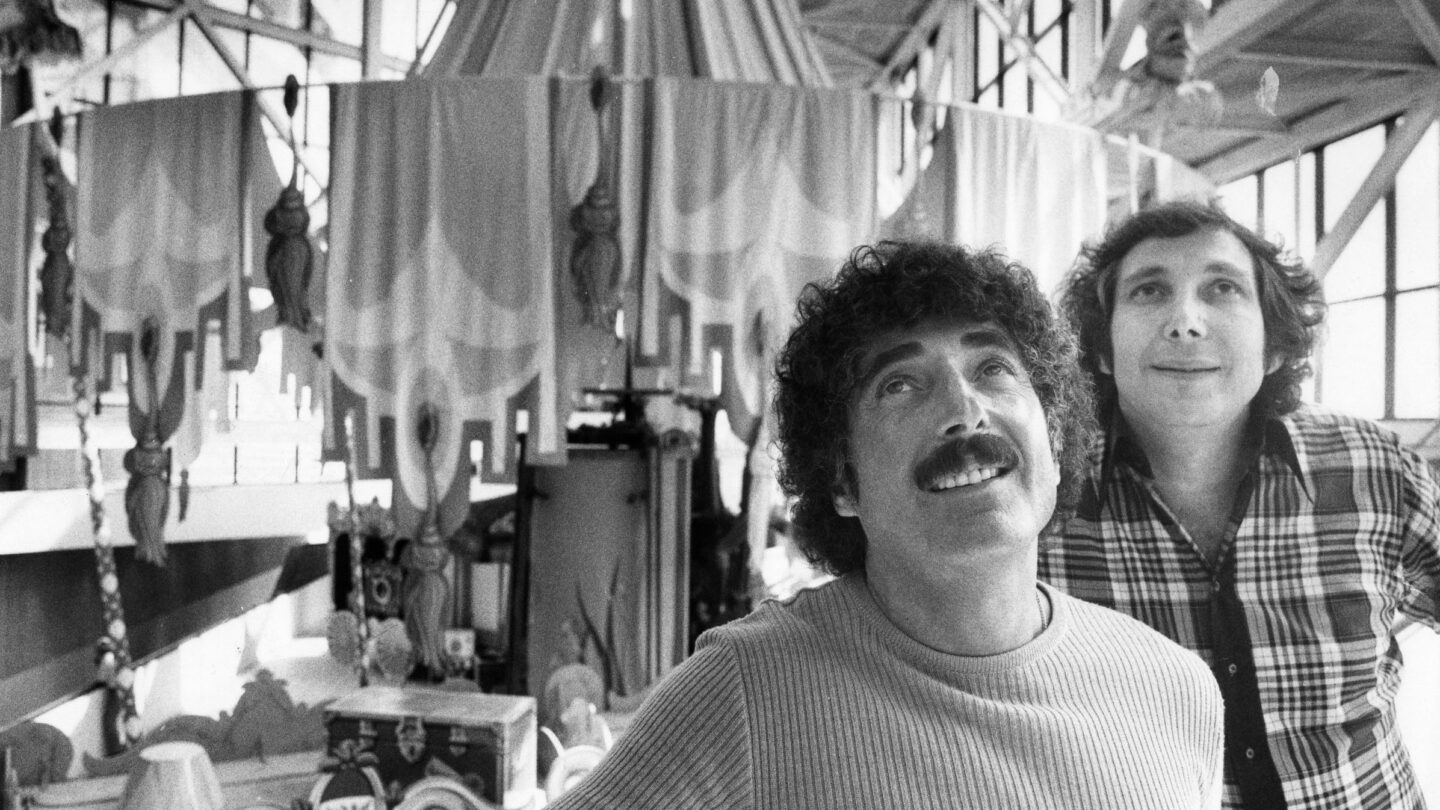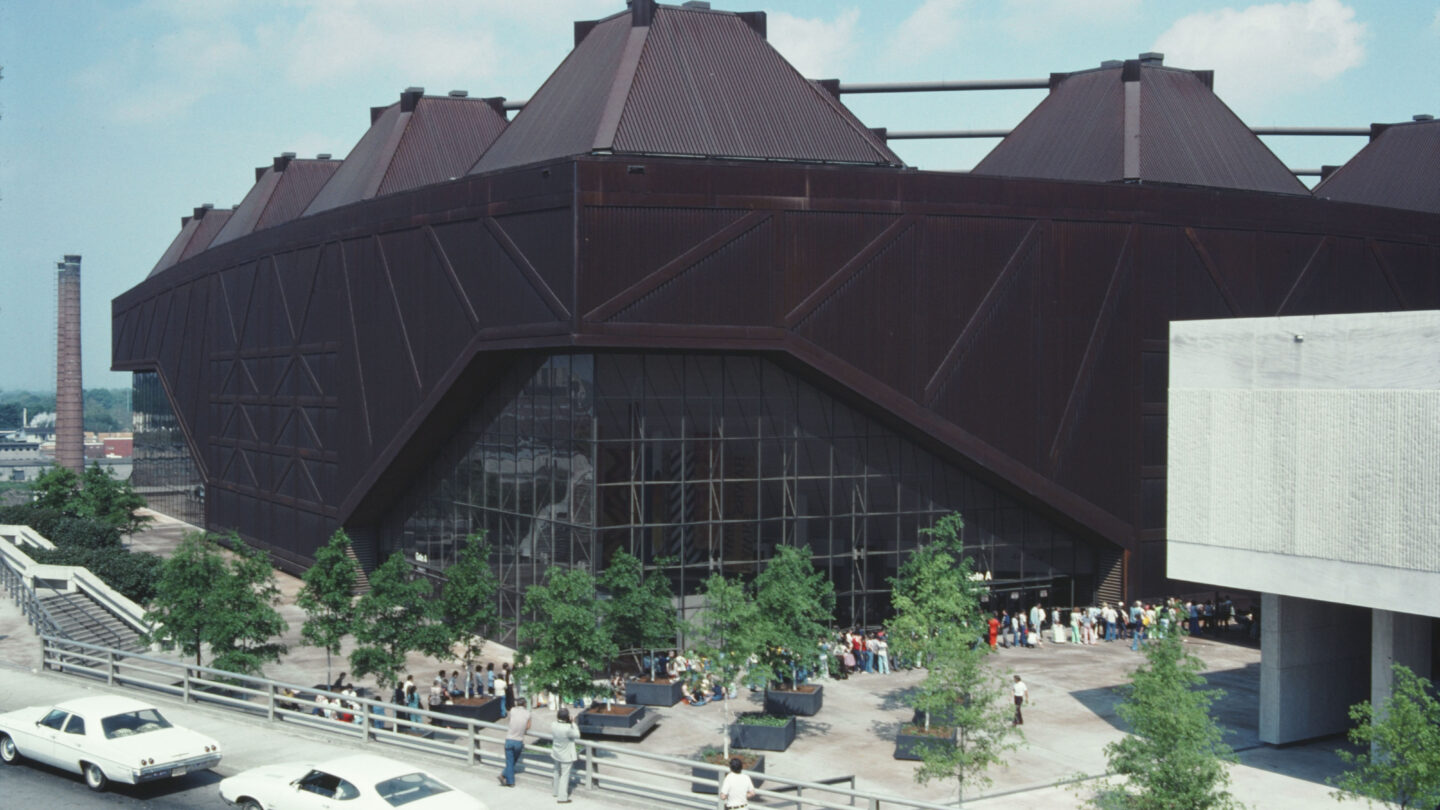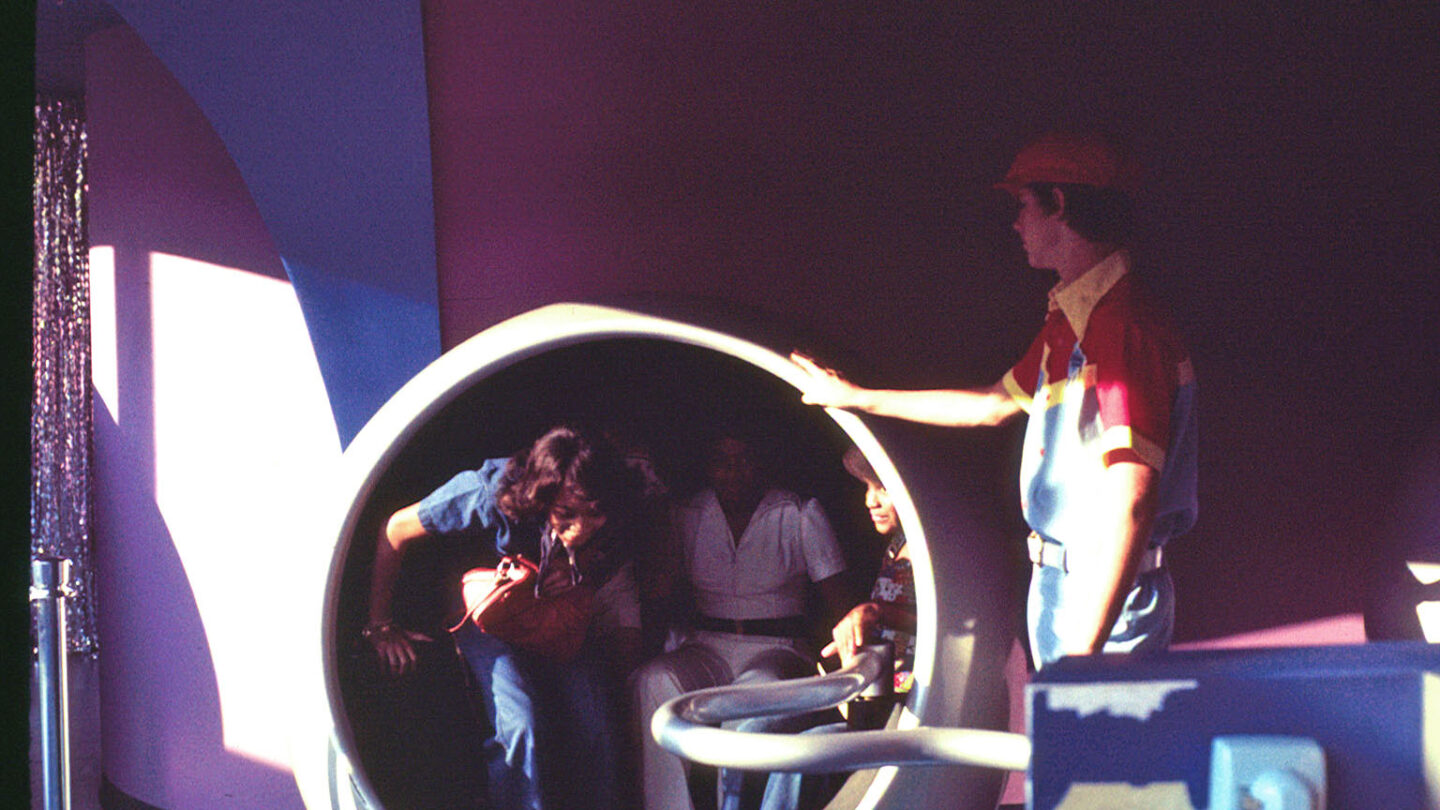
Sid and Marty Krofft at their indoor amusement park, the World of Sid and Marty Krofft, Omni International Complex (now known as the CNN Center), Atlanta, Georgia, May 13, 1976. AJCP446-241a, Atlanta Journal-Constitution Photographic Archives. Special Collections and Archives, Georgia State University Library
In November 1976, Georgia’s first indoor amusement park closed its doors permanently after only five months of operation. The World of Sid and Marty Krofft, an eight-story attraction in the Omni International Complex – now known as the CNN Center – was projected to attract at least 1 million visitors after a year in operation.
However, the park never reached that milestone.
Canadian brothers and puppeteers Sid and Marty Krofft had a history of creating extravagant designs to showcase their creations to a larger audience, but this ultimately led to the failure of the World of Sid and Marty Krofft.
The Krofft brothers started their careers as puppeteers in the 1940s. Sid Krofft, the older of the two, spent his early 20s touring the United States with puppet shows, operating marionettes on the “Jack Benny Program” (1932), and collaborating with Judy Garland. Sid Krofft had 28 years of professional experience before he and his younger brother, Marty, became household names.
Publicity photo from the NBC children’s series, “H.R. Pufnstuf,” 1969, featuring Jack Wild, left, and H.R. Pufnstuf. Wikimedia Commons
As televisions became more common in households, there was a growing demand for children’s programming. In 1968, Hanna-Barbera released the “Banana Splits Adventure Hour,” a show on which the Krofft brothers worked on set and character design.
The fictional band of instrument-playing animals sporting bright red and yellow hats quickly gained popularity among children and adults. This experience propelled their careers, and in 1969 the Krofft brothers produced their first children’s show, “H.R. Pufnstuf,” which chronicled the adventures of a young boy named Jimmy stranded on Living Island.
Mayor H.R. Pufnstuf incorporated designs from the Kroffts’ work on the “Banana Splits” but added a layer of psychedelic eccentricity, signifying the start of Sid and Marty’s distinctive style.
The success of “H.R. Pufnstuf “spawned numerous hit shows, including “Lidsville” in 1971, “Sigmund and the Sea Monsters” in 1973, and “Land of the Lost” in 1974.
Amid their television success, the Kroffts collaborated with amusement parks such as Six Flags to produce puppet shows.
Krofft Recording Sessions – Tales of the Okefenokee and other Six Flags Projects. Reed Randolph
In 1968, the Kroffts were hired to redesign one of Six Flags over Georgia’s original attractions, Tales of the Okefenokee: The Old Plantation Legends. This boat mill chute-type ride, inspired by Joel Chandler Harris’s Uncle Remus stories, featured animated figures.
Most of the original sets from the ride remained unchanged, with the Kroffts focusing their efforts on improving the animated figures, sound, and music. Drawing inspiration from Walt Disney’s 1946 film, “Song of the South,” and the Little Golden Books based on the film, the ride incorporated elements from the works of Jay Ward, Hanna-Barbera, and Rankin and Bass Productions.
For the 1968 version of the ride, Lennie Weinrib, Joan Gerber, who also contributed to the production of the Kroffts’ television series, “H.R. Pufnstuf,” provided some of the voices. The ride was in operation until 1980, when it made way for Monster Plantation, now known as Monster Mansion.
In 1970, the Krofft brothers began developing a plan that had yet to be executed before — opening an indoor theme park. Six Flags Over Georgia, located in Austell, was the closest amusement park to metropolitan Atlanta.
However, long lines, the risk of severe sunburn, and seasonal openings made a compelling case for the need for a fully indoor park. It wasn’t until 1974 when real estate developer Tom Cousins called Marty Krofft to offer what would become the Omni International Complex in downtown Atlanta as a space for the Kroffts’ theme park.

View of the Omni Coliseum in downtown Atlanta. Cortlandt F. Luce Jr., Cortlandt F. Luce Jr. Photographs, Kenan Research Center, Atlanta History Center.
Atlanta’s rank as the murder capital of the U.S. in the early 1970s made developing the Omni a precarious business venture. However, Cousins and the Kroffts persisted, not anticipating that this decision would contribute to the demise of the theme park.
Despite the high crime rate in the area, more than 3,000 dignitaries and celebrities attended an exclusive pre-opening of the World of Sid and Marty Krofft on the Sunday before the grand opening.
During the ceremony, Mayor Maynard Jackson proclaimed, “This is the greatest opening in Atlanta since ‘Gone with the Wind'” and “the most fantastic thing that ever hit any downtown in the world.”
The well-attended and glorious opening day further fueled the mayor’s vision.
Sid and Marty Krofft’s indoor amusement park, The World of Sid and Marty Krofft, Omni International Complex (now known as the CNN Center), Atlanta, Georgia, November 15, 1976.
On May 24, 1974, droves of curious Atlantans and travelers flocked to witness Sid and Marty’s creations in person. The amusement park was situated on four levels towering over an ice-skating rink in the center of the Omni, with a hidden fifth level below ground.
Guests stepped onto the world’s longest escalator and were greeted by a pair of two-story tall jesters.
One of the park’s most notable attractions was the human-sized pinball machine, where guests could climb into a larger-than-life pinball and slingshot around a 700-foot course while dodging quarters and other passenger-filled pinballs.
Another popular ride was the Crystal Carousel, the world’s first three-tiered carousel built since 1911. The carousel operated using, at the time, new-age air-cushion technology to create a quieter riding experience. However, the ride’s weight of 600 tons rendered it immovable, an issue that plagued nearly all of the park’s rides.
The rides were merely a bonus for Sid and Marty, whose main concern was creating an immersive experience centered around marionette puppet shows.
Hundreds of actors in costumes and face paint entertained families through magic tricks, face painting, and balloon animals. The brothers’ signature characters, including Sigmund and H.R. Pufnstuf, could be found throughout the park. Local actors were hired to operate the suits with audio tapes featuring pre-recorded phrases, enabling them to interact fully with guests.

Photos of the Pinball ride at the World of Sid and Marty Krofft. Toml1959, Flickr
Although the opening day was promising, attendance quickly dwindled. Rides were in constant need of repair, guests spent a maximum of three hours instead of the anticipated six-hour experience going through the park, and tickets cost more than admission to Six Flags Over Georgia.
Additionally, crime in metropolitan Atlanta was still at an all-time high. Furthermore, the World of Sid and Marty Krofft had been operating in debt since opening day. The bank funding the park refused to continue financial support.
As a result, the park closed its doors with little to no warning to employees and potential visitors. The brothers fought to bring in new investors, hoping to reopen at least a month later, but they couldn’t strike a deal.
Sid and Marty did not let this stop them. In 1991, they revived “Land of the Lost” for one season and brought it back again for the movie of the same name, starring “Saturday Night Live” alum Will Ferrell.
As of 2023, the brothers are showrunners for the children’s program “Ruff and Stuff” on Nick Jr.
“All our careers, we’ve been trying to warm up the world again,” said Sid Krofft, and the brothers continue to do just that.


